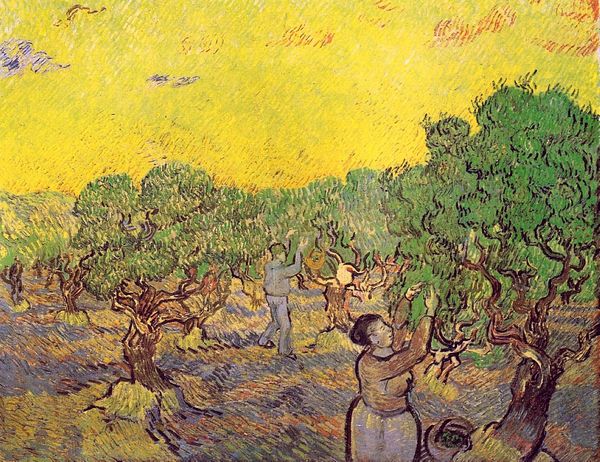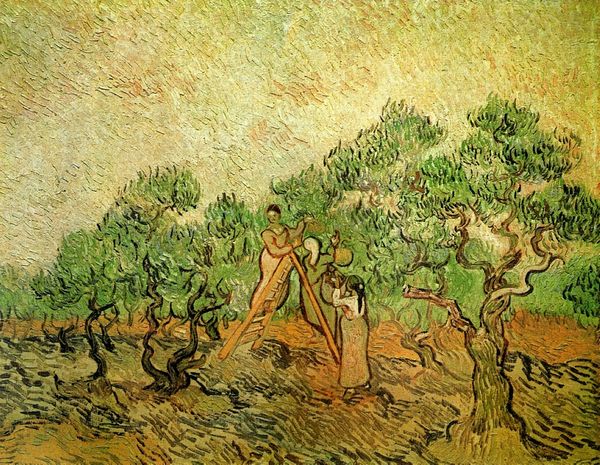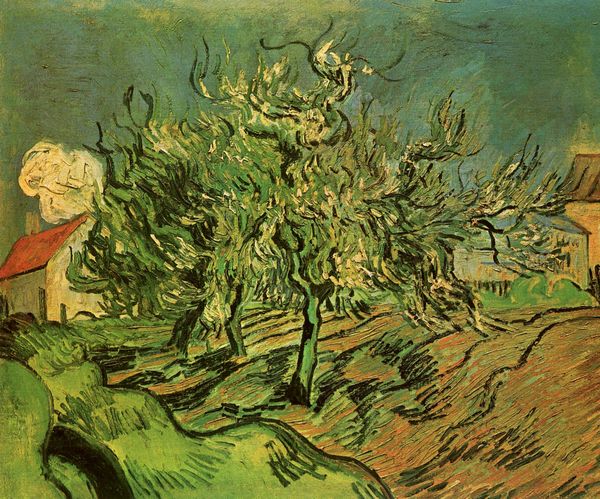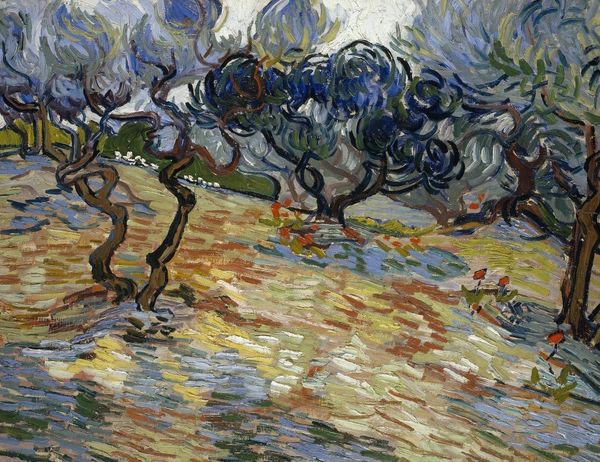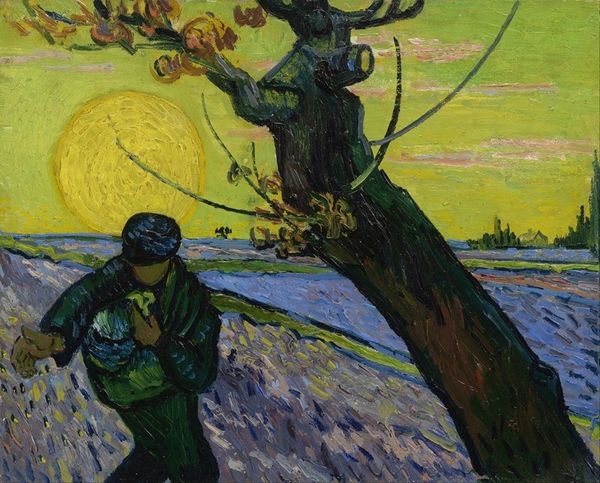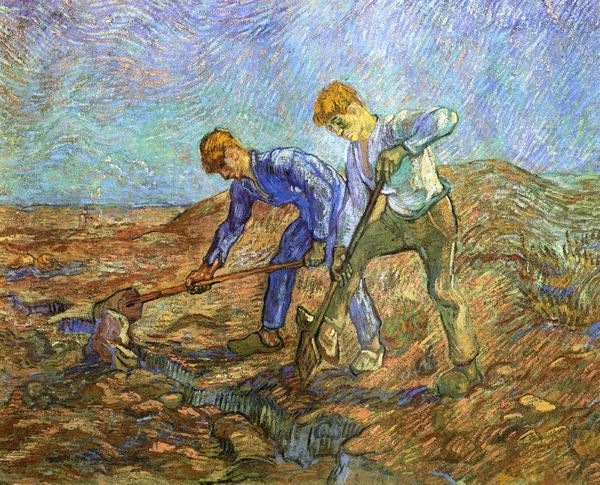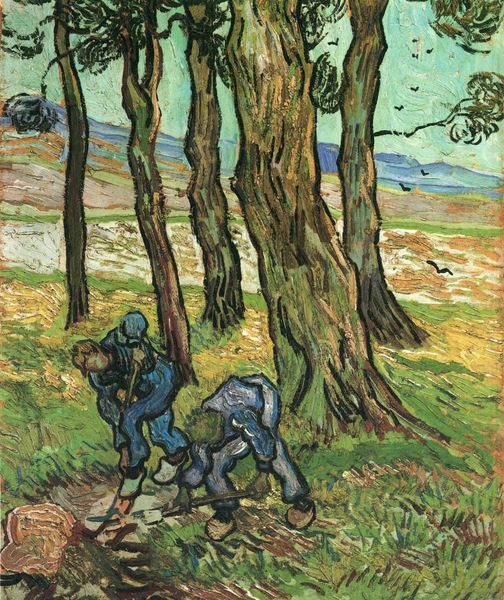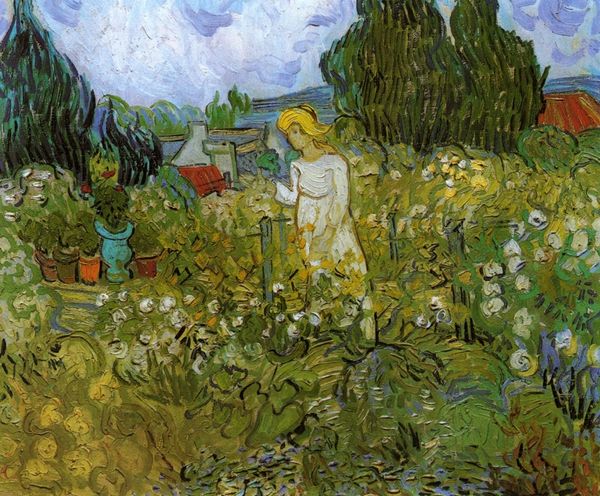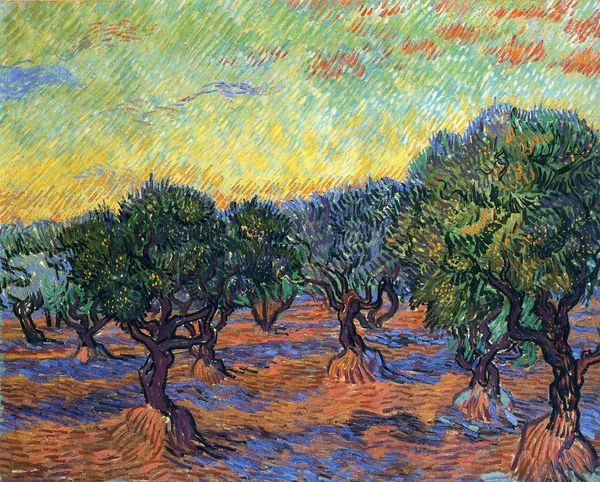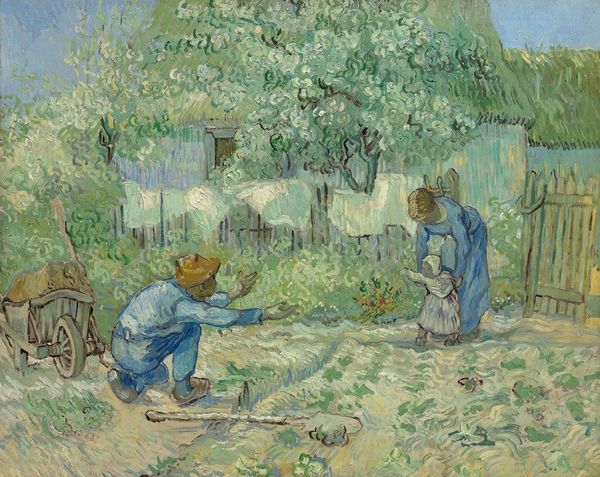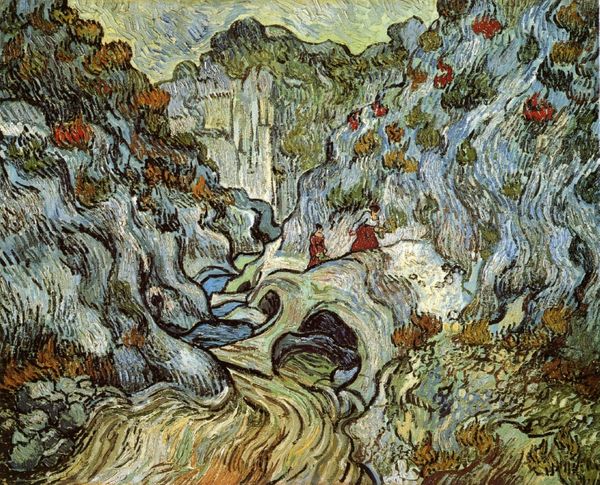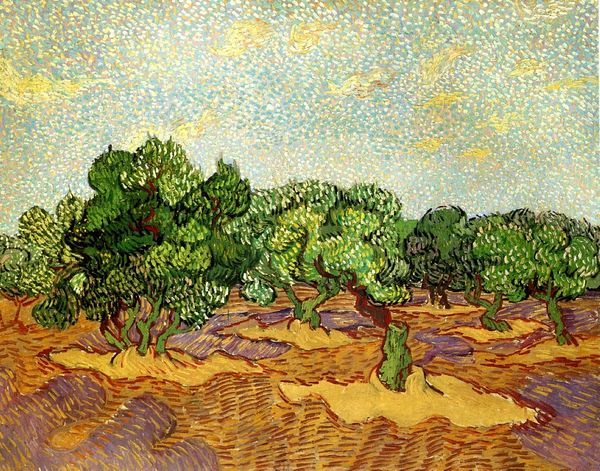
painting, oil-paint, impasto
#
painting
#
oil-paint
#
landscape
#
figuration
#
impasto
#
genre-painting
#
post-impressionism
Copyright: Public Domain: Artvee
Editor: This is Van Gogh's "Women Picking Olives," painted in 1889, using oil paint. The repeated brushstrokes create this sense of rhythm, like the scene is softly vibrating, and that palette is so interesting… What strikes you most about the work's formal elements? Curator: Observe how Van Gogh uses impasto, building up the paint’s texture on the canvas, to capture the optical qualities of the light. The swirling brushstrokes and juxtaposed colors work together to make something new on the canvas. Editor: Can you expand on that? I am intrigued by this choice of the artist. Curator: Consider the density of the brushstrokes, especially in the foliage. How the artist’s marks move this way and that, creating an intensity, juxtaposed with the softer pink tones in the sky. Van Gogh masterfully balances energy and visual calmness through composition and application. It isn't just representation, it's construction. Editor: That's interesting, how the composition guides our eyes despite the seemingly chaotic brushstrokes. Curator: Precisely! Look closely—where does your eye keep returning? Is it the figures or something else? And how do you think he guides you? Editor: I notice I keep returning to the base of the large tree at the center right; it contrasts with the figures which otherwise dominate the scene. And it almost makes the picking feel inconsequential by comparison. Curator: And perhaps that is Van Gogh's intention! By directing the viewer’s gaze with his choice of colours and textures, the artist draws our attention beyond the literal act, urging us to see the painting as an assembly of brushstrokes. The work can be understood as a visual structure, rather than just a landscape. Editor: I now see how he elevated the artistic value through purely structural arrangement!
Comments
No comments
Be the first to comment and join the conversation on the ultimate creative platform.
